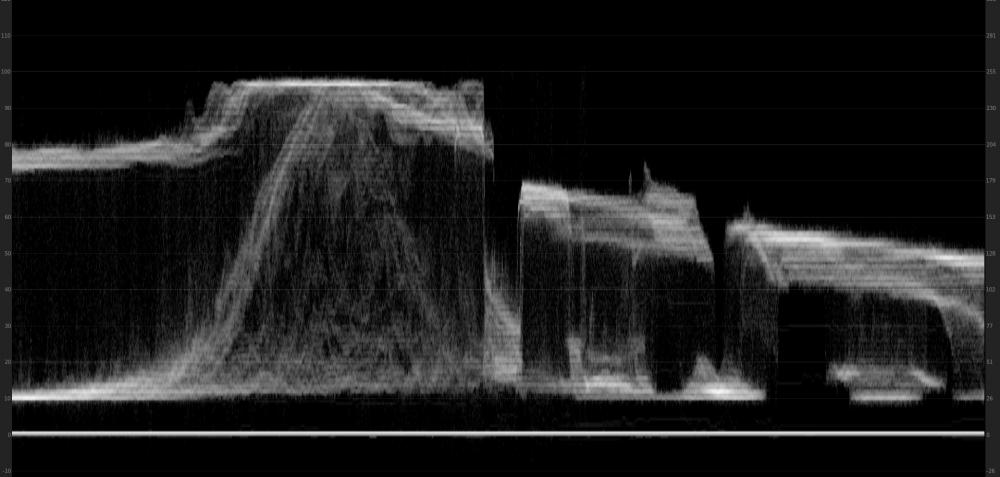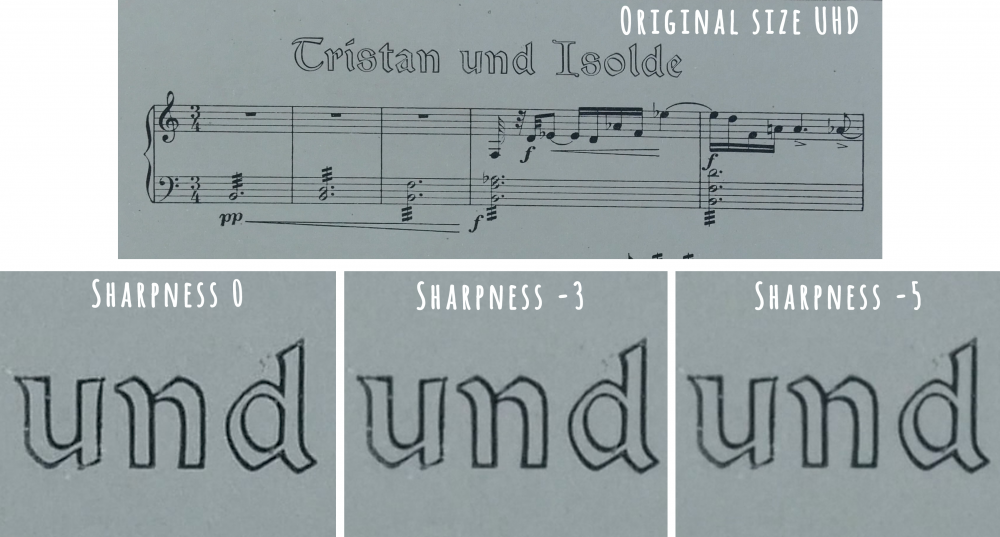-
Posts
227 -
Joined
-
Last visited
Content Type
Profiles
Forums
Articles
Posts posted by Cary Knoop
-
-
GH5 Prototype
In: Cameras
1 hour ago, marcuswolschon said:It DOES change that you suddenly can distinguish 3 additional tones for each of the 3 colour channels. (That's not 3*3*3 but 3*2^10 - 3*2^8 additional colours.)
* So a very gradual fog or sky will have less visible steps.
* You may get a much better green screen (although that's mostly by going from 8bit 4:2:0 to 10bit 4:2:2).
The darkest 5% of the image are still noisy. That doesn't change.
The brightest 1% still clip one or two colour channels.
What does change is that the 94% of the image that are well exposed suddenly resolve a lot more colours that have formerly been indistinguishable.
What does change is that any colour grading that expands a part of the brightness, saturation and/or tonal spectrum will have a lot more steps to work with and can thus be done more boldly without introducing ugly steps in gradients. This is important to a lot even when delivering the final result in 8bit 4:2:2 .
These people are already doing 10bit recording with the existing GH4/GH4R and they do it for very good reasons. So obviously it is important even without increasing dynamic range and/or decreasing thermal noise from what the GH4/GH4R offers. They just can't do it INSIDE the camera yet and have to use external recorders. Having a clean 4:2:2 10bit output was one of the major improvements of the GH4 and GH4R.
10 bits of data obviously can resolve more than 8 bits but just because you output 10 bit does not guarantee it will be any better.
When photons fill the well of a pixel a particular value is read. The AD bit depth is no measure of the accuracy of the value. Compare it to using a bad lens, if the bad lens can only resolve 2M pixels having a 36M pixel camera is not going to do you any good. By the way raising ISO above base ISO does not reduce noise as you seem to suggest.
There are basically four kinds of noise due to:
1. The discrete nature of light ("the less light the more noise")
2. The limited efficiency of the sensor to trigger an electron to react to a photon ("% of photons not catched by the sensor").
3. The noise of the sensor ("temperature and other things").
4. AD quantization error.
In addition while noise appears at all luminance levels more or less evenly (except for item 1) for rec 709 or 601 like outputs it appears stronger at lower levels because the output is converted from linear to gamma curved output.
-
GH5 Prototype
In: Cameras
17 minutes ago, Don Kotlos said:No that is not correct. You are confusing dynamic range with bit depth. While the bit depth can potentially limit the dynamic range the opposite does not hold true. Sure if you are at noise levels then bit depth might not offer an actual gain in the number of colors, but for the range of values that the noise is less than your signal (the ~12 stops with the GH4 for example) 10 bits per channel offer more color tones that you otherwise throw away.
See the link in the original response for an actual example if you are still not convinced. If you still don't think there are significant differences then you should accept that others do find differences important enough and don't think 10bits is a gimmick with 12 stops of dynamic range. Again cameras with noisier sensors give better colors, and bit depth is one of the reasons.
I am not sure what you are trying to say here, but in the original response there was no confusion between bit depth and dynamic range which frequently but wrongly is expressed also in bits.
10 bits as opposed to 8 bits does not give any guarantee of better quality video, it depends on the noise floor. You can sample those pixels on the sensor with 1000 bits of resolution but it won't do you any good, it is limited by the noise floor.
It is the same as with sound, you can record at 16 or 24 bits but if the noise level is not low enough 24 bits does not gain you anything.
It seems we simply have to agree to disagree with it because you think what I am saying is wrong.

-
GH5 Prototype
In: Cameras
58 minutes ago, Don Kotlos said:No that is definitely not true. 10bits per channel offer a much denser space that can improve color reproduction and tonal differences while getting rid of artifacts like banding. Especially v-log with its
10 bits per channel only has a benefit if the noise floor is sufficiently low.
Otherwise we just have more random bits which can be easily reproduced by simply dithering the signal from 8 to 10 bits.
And like the others stated the bit depth of a signal is not the same as the dynamic range. However it is a limiting factor, if you want a full dynamic range of 14 stops you need a noise free minimum bit depth of 14 bits but you can certainly compress it to 10 or even 8 bits.
-
GH5 Prototype
In: Cameras
2 hours ago, Vesku said:New GH5 rumors
- 6k Photo and maybe also 6k video like in 4k Photo (6k sensor)
- 4k 60P
- 4k 30P 10bit 4:2:2 internal with maybe HDR video
– The GH5 has the in sensor stabilization just like the G80
– The camera has 2 SD card slots, maybe 4k+proxy recording
– No more limit about the duration of recording. 29 minutes in Europe.
– The audio XLR microphone hotshoe mounted I/O interface will be compatible with the DMC-GH4.
– It has full size HDMi
– The main sizes are identical of the GH4. Advantage : You can use ANY same accessory like Cage, Etc. from your previous GH3 or GH4.
– Panasonic plans to start shipping out the GH5 in March/April!
– Body only: Price will be between 1 800 € and 2 000 € in Europe for the DMC-GH5.
– Price will be ± 2 900 € for the DMC-GH5 + the new Panasonic Leica 12-60 Lens (not the older 12-60mm lens!)These all sounds great however more importantly is there a dynamic range improvement and is there an improvement to the noise floor, if not it makes the whole 10 bit thing not more than a marketing gimmick.
-
1 hour ago, mercer said:
You cannot change the Luma Range on the GX85 and to be honest, I'm unsure what it is natively set at. If you're looking for that feature, then you should probably go with the G80/85... which is the better deal now anyway.
GX85 outputs video levels but the camera does record out of range values so when you have a high contrast recording most of the time you need to bring values back into legal range to prevent clipping or crushing.
-
18 hours ago, jase said:
So, I finally got my Sigma 18-35 in combination with the Canon EF Speedbooster XL. Yes, this thing is huge! But up until now it ticks so many boxes for me, that I am considering to keep it.
Just one thing is really weird: when i turn the zoom ring, the aperture (!) changes, no matter which mode I am in, even in M or A?! It starts at f1.1 @18mm which is correct - however it goes all the way up until it hits f3.6 when zoomed @35mm - I dont get it, maybe @conurus could chime in?
Make sure you run the latest firmware versions:
Metabones should be at least 2.5 but preferably 2.6 (this version came out today!).
Panasonic GX85 should be version 1.1 not 1.0.
-
6 hours ago, Hans Punk said:
Grain and Noise are two entirely different things.
That is not true. Grain is ill distributed noise.
What makes resolution in film are tiny film particles. Grains are an order of magnitude larger and obscure those particles.
5 hours ago, Vesku said:I think many use grain to hide banding.
I think the better option is to apply Gaussian noise.
-
While I occasionally add noise to video I never add grain.
I must say I am not getting it, what is the point in degrading picture quality? Grain is just badly distributed noise!
It's like adding vinyl scratch sounds or tape noise to digital audio recordings.
But, to each his own!
-
3 hours ago, mercer said:
Lately, I've only been using Kelvin at 4400 and then adjusting accordingly in post.
I don't think that is a good idea.
It is far better to set an accurate white balance directly from the sensor data than to set it after the information is debayered, chroma subsampled, noise reduced, anti aliased, sharpened and compressed.
-
-
I am glad YouTube takes this up and commits (again) to open source solutions (Needs VP9 for HDR)!
-
Just now, toxotis70 said:
Is there any other speedbooster that have electronic connection....?
Metabones is very expensive and I don't need af, the only thing I need is the adapter to pass the right information to the gx80 so I have stabilization.
You do not need electronic contacts for IBIS to work, you could use the Mitakon Zhongyi or even a generic speed booster and then enter the focal length manually.
-
2 hours ago, webrunner5 said:
Never get one with a center section that raises.
Why?
I find it very practical if I need to adjust the height of the camera after the tripod was setup.
-
On 12/8/2016 at 0:50 PM, ricardo_sousa11 said:
The filmic look comes from dynamic range, but unfortunately not all cameras have enough to have that filmic look, therefore we raise the black levels to mimic that style. Its a stylistic choice, I dont like vibrant looks, to me, thats as vibrant as I would go.
Of course if that is your preferred taste then you should continue doing that. But I would not equate that look with 'film'.
I suppose you are not a technicolor fan?
-
20 minutes ago, Davey said:
An irreverent review:
Great, his clips are always entertaining!
Kai is back but now without Digital Rev!
-
Anyone Else??
In: Cameras
1 hour ago, webrunner5 said:And if you want 4k cheap buy a Panasonic G7.
Agreed, although the GX80/85 is currently discounted heavily and has in my opinion a better color than the G7 and has no time limitations (in the NTSC region) so that may be a good alternative.
Here are some shots made by the G7:
- webrunner5, mercer, Orangenz and 1 other
-
 4
4
-
Very creative!
-
5 minutes ago, Axel said:
Needed for the analog look. As soon as the black slug was projected on the screen after the lights went down, the screen became brighter. So much for the allegedly higher DR in classic cinema.
Sorry but that does not make any sense to me.
If we look at the scope it is clear the black levels are wrong:
-
2 hours ago, ricardo_sousa11 said:
This was a specific clip to go for a moddy style, but you can go for a more vibrant style very easily and it still looks great.
I think your black levels are way too high.
-
2 hours ago, Mat Mayer said:
UMG is pretty big, how much should we sue for? It is basically fraud.
These are big accusations!
It is not fraud if they have a genuine claim to the visual content or if it was a mistake.
What is the visual content that is claimed?
-
16 minutes ago, Mat Mayer said:
Shit just got very real. UMG rejected the claim. Lawyer time.
@Admin- please just remove the country name above.
You stated that you did not use any songs but the copyright claim by UMG is not about sound but about visual content. I would tipple check the visual content before you go ahead and dispute the take down. Some locations/buildings/iconic sites may have a copyright as well.
-
On 12/2/2016 at 4:58 AM, John Matthews said:
I'm guessing your sharpening was higher than -5 as there was a slight halo around all high-contrast elements (building roof and foliage).
John, after your comment I did some testing with various sharpness levels and I have to come back to my earlier opinion.
I think you are right about the sharpness I am going to settle on -4 from now on.
-
5 minutes ago, Mat Mayer said:
I have contacted Universal Music Group about 30 different ways. If they don't reply fast I will be setting our solicitor on them.
I think there is no need, they have to sue you if they want the video removed not the other way around.
Here is the process for a Content Id claim and a DMCA notice:
https://www.eff.org/issues/intellectual-property/guide-to-youtube-removals
-
5 hours ago, Mat Mayer said:
< removed by request >
Obviously if you want the name removed from my posting I have no objection, I am just trying to help not to give you any headaches. However after some time the owner/administrator of this form no longer allows any updates. I would contact the administrator and ask him to update my posting, I certainly have no objection to that.
< removed by request > Unless the artist actually sells the rights < removed by request > merely licenses to sub license the content. That means the original owner is still the rights holder.
< removed by request > explains here the process and the preferred way of handling it. Instead of disputing the claim they prefer you take an alternate road:
< removed by request >
That is not unusual, for instance AdRev has a similar mechanism.
YouTube does not remove footage by themselves, they are instructed by the rights holder if they issue a take down request. However you have the right to dispute it but at that point it becomes a serious matter. If you are sure you are correct and the claimant is wrong you should dispute the take down and YouTube must reinstate the video unless the owner sues you within a given time frame. If they do not your video will be back and your strike will be removed.
I have disputed claims before on historical recordings where Content ID was misidentified but it never came to a point of suing. The rights holder is required before they issue a take down to have a real person listen and verify if the claim is valid and always the issue was resolved.





GH5 Prototype
In: Cameras
Posted
The content may be (predominantly) displayed on 1080p devices now but obviously content providers make footage not just for viewing in the present time only.